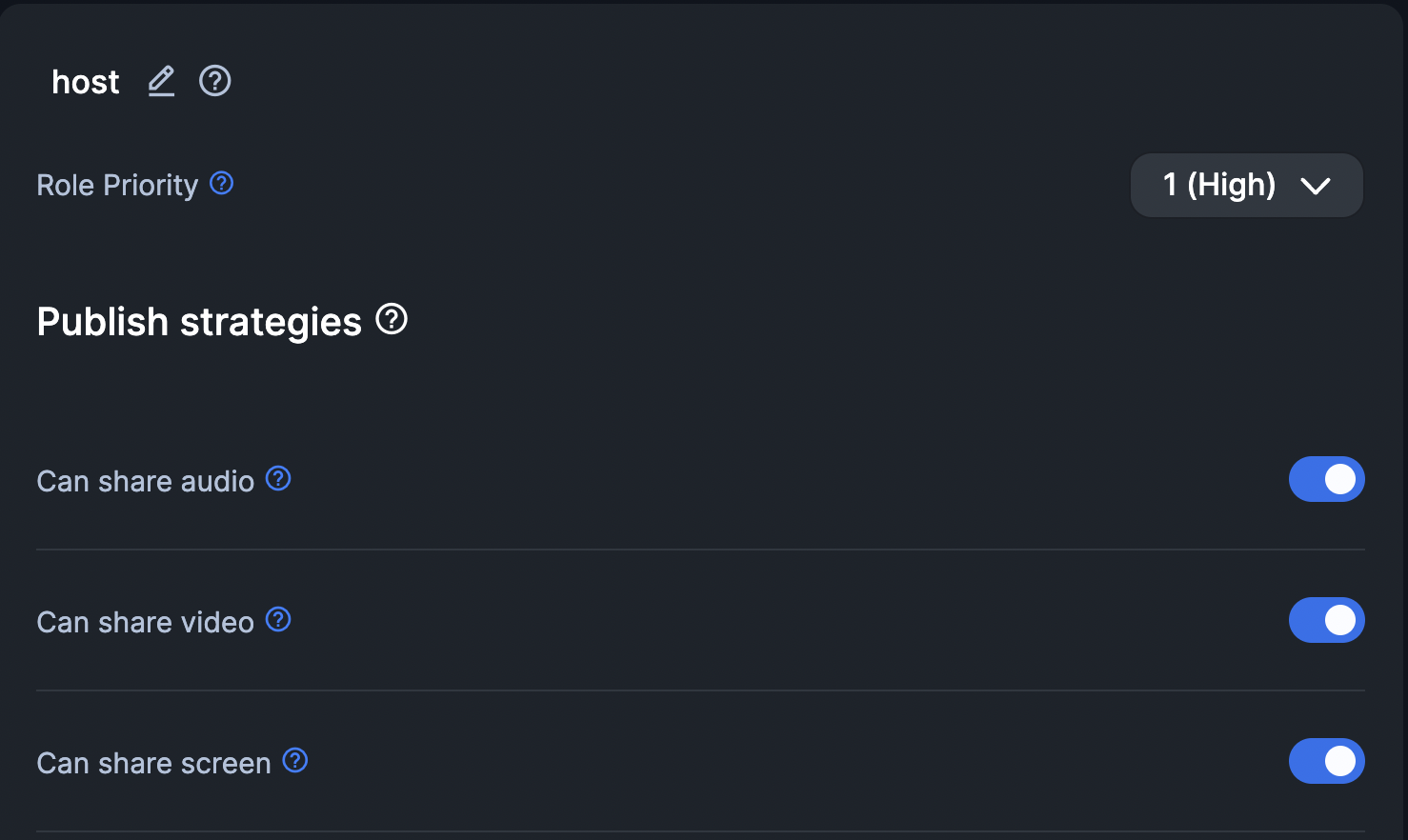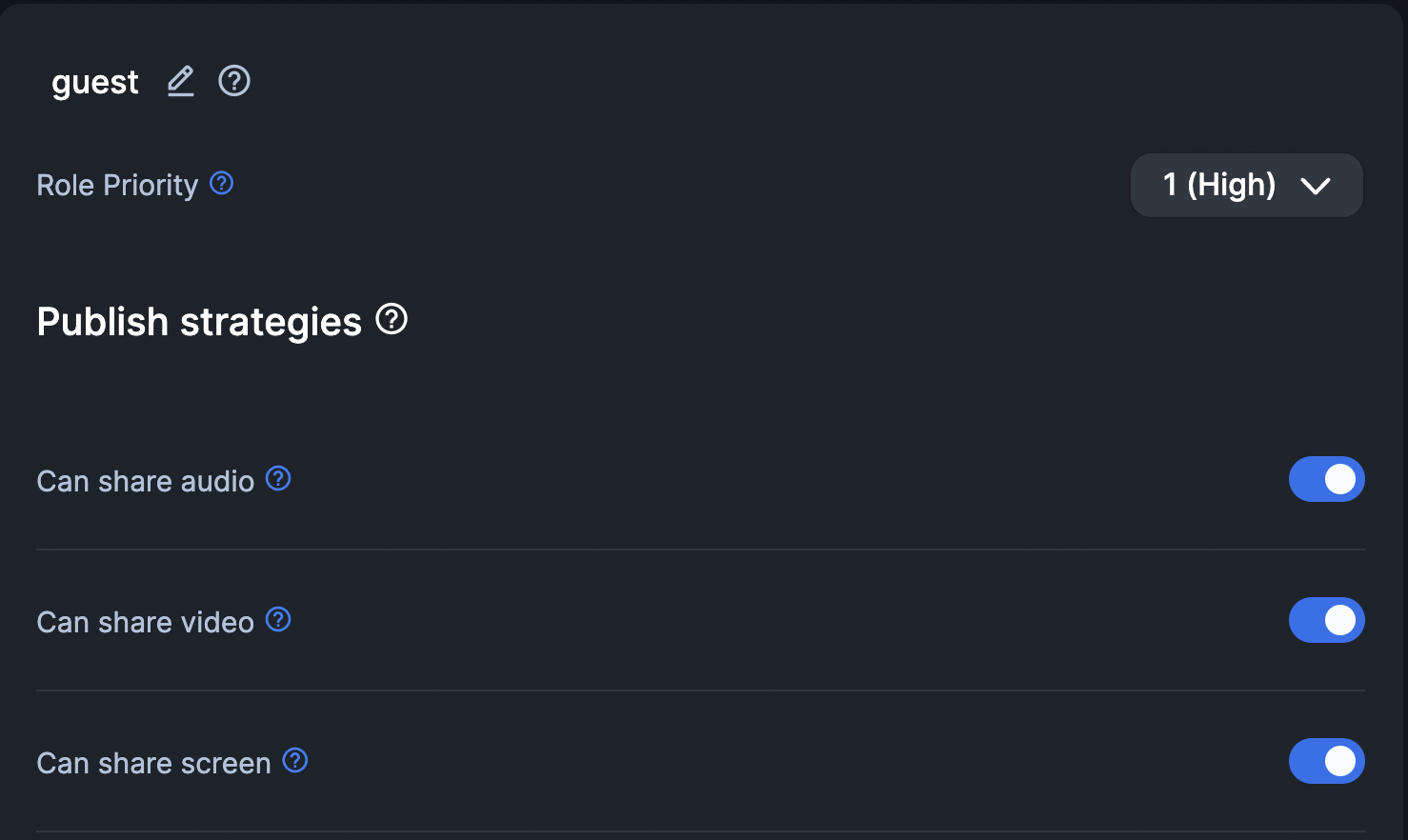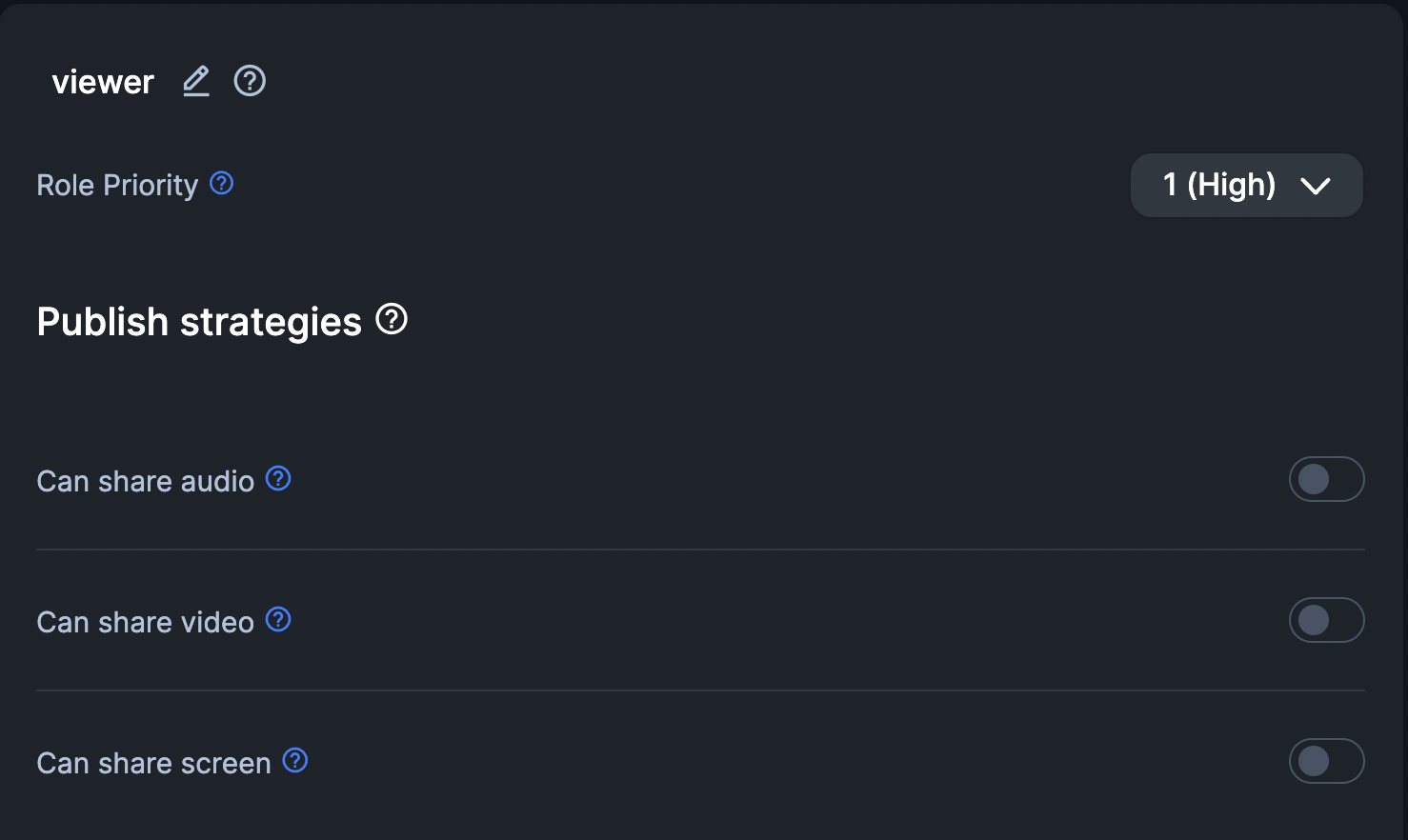Strict Privacy Applications
Strict Privacy Applications are those that request permissions only as needed, following the principle of least privilege. This means that the application only requests the minimal set of permissions necessary for its intended functionality, rather than requesting all possible permissions in advance.
Steps to create a Strict Privacy Application
Join in a role without Video and/or Audio permissions
Create three roles with permissions as:
-
Host

-
Guest

-
Viewer

When you join a Room with the Viewer role, your app does not need to request microphone and camera permissions from the user because users joining with the Viewer role do not have video and audio publishing permissions. However, when you join with the Host or Guest role, you will need to request permissions before joining the room in advance.
💡 Note: The roles mentioned above are just for demonstration purposes, you should create your own roles based on your use cases and requirements.
Request Permissions on Role Change
If you are requested to change from a non-publishing role to a role that has audio-video publishing permission, the app should request permissions before accepting the role change request, if the permissions were not requested during the initial room join.
It is important to note that in case of a 'force' role change, the app is required to have audio and video permissions in advance.
💡 Note: We recommend using the react-native-permissions package for requesting permissions from user.
// `HMSRoleChangeRequest` is a class that contains info about the role change request. interface HMSRoleChangeRequest { requestedBy: HMSPeer; // This is an `HMSPeer` object which contains info about the peer who performed the role change suggestedRole: HMSRole; // This is an `HMSRole` object which contains info about the destination role } ... import { PERMISSIONS, request } from 'react-native-permissions'; const onRoleChangeRequest = async ({ requestedBy, suggestedRole }: HMSRoleChangeRequest) => { try { // Requesting Camera Permission if new role can publish video if(suggestedRole.publishSettings?.allowed.contains("video") ?? false) { const cameraResult = await request(PERMISSIONS.ANDROID.CAMERA); } // Requesting Microphone and Bluetooth Permission if new role can publish audio if(suggestedRole.publishSettings?.allowed.contains("audio") ?? false) { const audioResult = await request(PERMISSIONS.ANDROID.RECORD_AUDIO); const blConnectResult = await request(PERMISSIONS.ANDROID.BLUETOOTH_CONNECT); } // Open a prompt to Accept or Reject the role change request, OR straightaway accept the request await hmsInstance.acceptRoleChange(); } catch (error) { console.log('onRoleChangeRequest Error: ', error); } }; hmsInstance.addEventListener( HMSUpdateListenerActions.ON_ROLE_CHANGE_REQUEST, onRoleChangeRequest );
You can refer to the Change Role documentation to learn more role changes.



